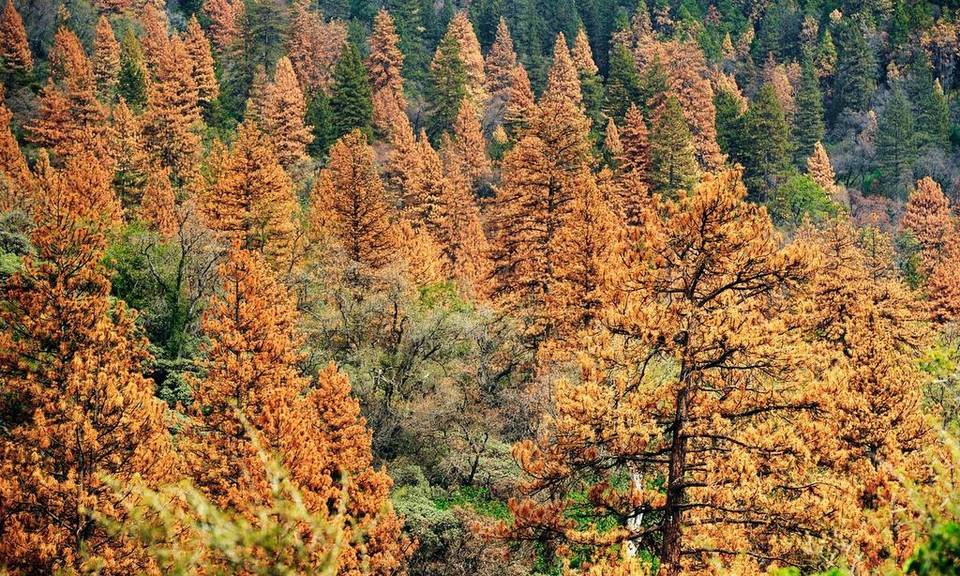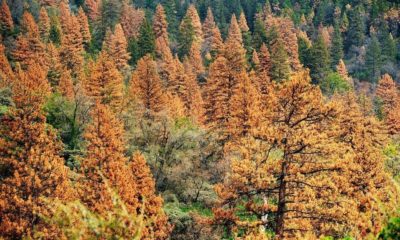The Steadily-Dying Sierra Nevadas
Legal Planet: Environmental Law and Policy 2016-10-30


Dying trees pepper the Yosemite landscape.
Like over 600 other environmental lawyers, professors, law students and regulators, I attended the 25th annual Environmental Law Conference at Yosemite last weekend. As always, the Conference–sponsored by the California State Bar’s Environmental Law Section–was a big success, filled with inspirational speakers and thought-provoking panels.
But the major topic of conversation–during the Conference proceedings, in hallway conversations and on outdoor hikes in Yosemite National Park–was not about the speakers or the Conference. Rather, it focused on the alarming state of Yosemite and the Sierra Nevada in general. The pine forests of California are dying at an alarming rate.
Forestry experts know that the causes of this ecosystem epidemic are chronic drought, bark beetle infestation and climate change. These phenomena operate in a perverse, symbiotic way: California’s chronic, five-year drought has made the pine trees of the Sierras especially vulnerable to the ravages of the bark beetle, a pernicious species of insect that has become the forests’ principal enemy. (California is home to some 19 different types of pine trees.) Conversely, the growing presence of the bark beetle in the Sierra Nevada range makes the pine forests more susceptible to the adverse effects of the ongoing drought. And the once-severe, freezing Sierra winters that previously kept the bark beetle population in check are becoming steadily warmer, thus allowing the beetles to survive and multiply year-round.
My layperson’s observations indicate that, both in Yosemite and in many other areas of the Sierra Nevada, one of every three or four pine trees is dead or dying. It’s a truly dispiriting sight–unlike anything I’ve previously seen in my 60 years of visiting Yosemite and the Sierras. And the pine forests’ dramatic decline in just the past year is shocking.
These same forestry experts tell us there’s nothing we can do to staunch the spread of disease and death in California’s pine forests.
Which leads to a further dilemma for environmental regulators and forest managers: what to do about the plethora of dead trees? Should we engage in vast timber harvesting to clear them from the Sierras, thus facilitating the environmental damage that widespread logging will inevitably trigger? Or do we leave the dead trees in place, where they will exacerbate the already-increased threat of cataclysmic forest fires? And should the human response to these tree deaths vary in National Parks as compared to the public lands of the Sierra Nevada generally? There are no easy answers or fixes to be had here.
To be sure, this forestry crisis is not limited to the Sierra Nevada range. According to a recent San Francisco Chronicle report, bark beetle infestation has ravaged 45 million acres of forests in the Western United States in recent years, including 15 million acres of U.S. Forest Service lands.
The once-splendid pine forests of California and the American West are dying at an alarming rate, right before our eyes. Sadly, all we can do is watch, and mourn their passing.